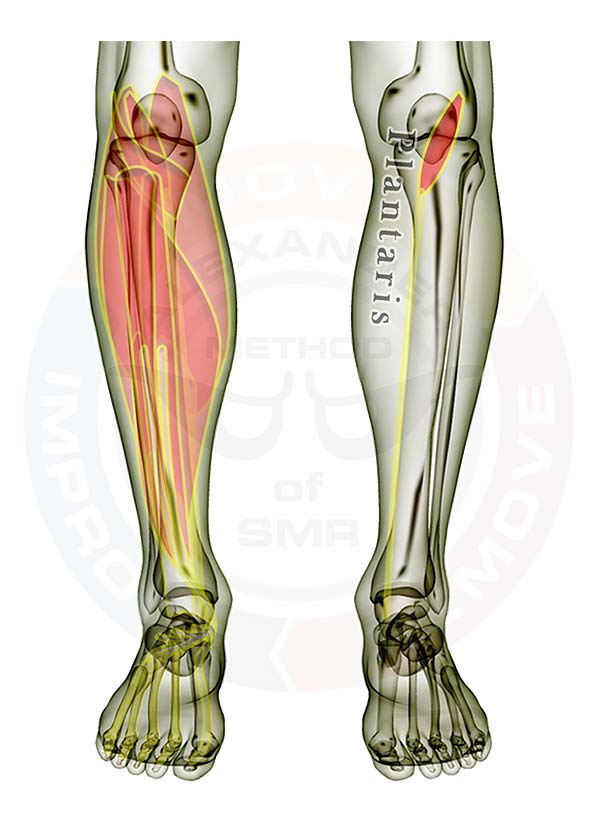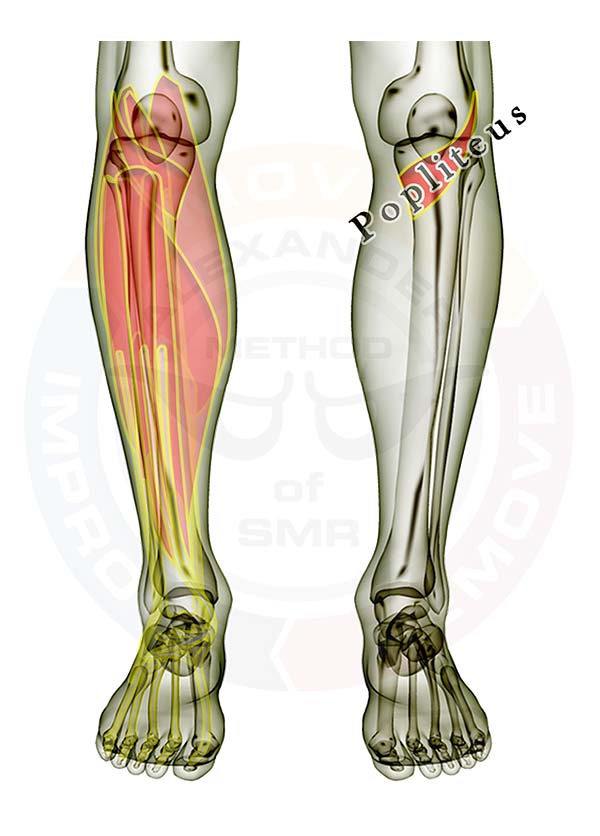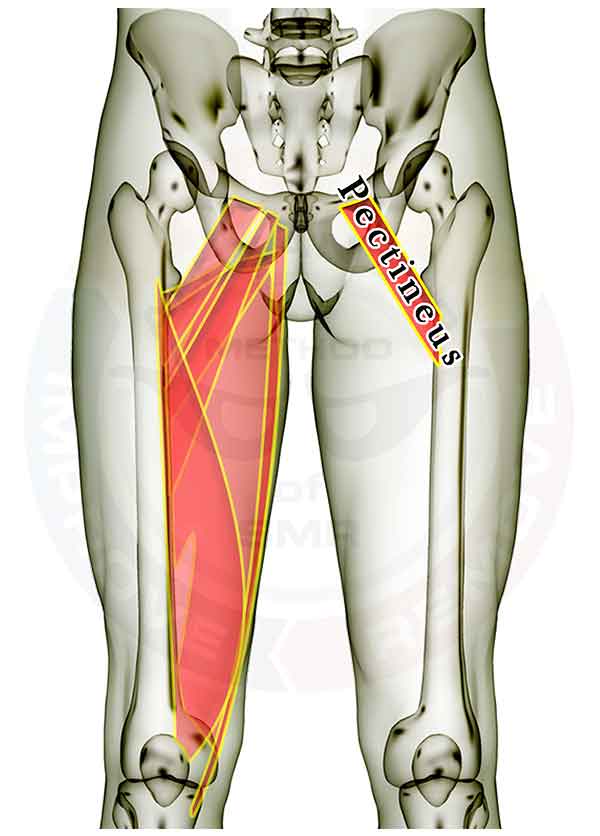
If this muscle regularly locks up on you, then you need to work on your quads EVERY DAY. Your quads extend (straighten) your knee, and the plantaris helps flex your knee. The quads are MUCH stronger than the plantaris (and all the other knee flexors, for that matter). In addition, your soleus muscle is probably locked up and your brain is firing the plantaris to help raise your heel more than it can handle. Be sure you check the soleus to relieve knots in it so your plantaris is no longer working harder than it should be.
The plantaris is displayed on the right leg. On the left leg the muscles are layered, showing how some of the muscles are covered by the others. All of the muscles are see-through so that you can appreciate the location and size of each muscle relative to the others.
Click here for a list of all the muscles.
Muscles that cross or attach to the hip or thigh bone (femur) and attach below the knee joint and DO NOT attach to the knee cap (patella)
Lower Leg
The following muscles attach across or below the knee.
Click the appropriate link for your interest.
Muscles that cross the knee
Muscles that pass or attach between the knee & ankle
- Gastrocnemius
- Popliteus
- Plantaris
- Soleus
- Peroneus Longus
- Peroneus Brevis
- Flexor Digitorum Longus
- Flexor Hallucis Longus
- Posterior Tibialis
- Anterior Tibialis
- Extensor Digitorum Longus
- Extensor Hallucis Longus
Good luck working out those tight knots.
If you have any questions, please post a comment. We try to respond within 24 hours.
We're here to help you get more out of your training!









